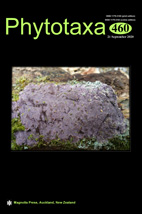Abstract
Allochrusa is a genus of subfamily Caryophylloideae comprising about 8 species distributed in Turkey, Central Asia, Afghanistan, Caucasus, and Iran. Four species of A. versicolor, A. bungei, A. lutea, and A. persica occur in Iran and show overlaps in morphology, which make critical their identification. In this study, we used 49 randomly collected specimens belonging to seven populations. AMOVA test provide important genetic variation among the examined populations and showed that 70% of the overall genetic difference was due to within population diversity, while 30% is because genetic population variability. Overall, 150 groups were distinguished through ISSR marker, in which 137 (90%) bands with a normal of 13.7 bands marker were polymorphic. Percentage of Polymorphic bands (PPB) ranging from 77% (ISSR-7) to 100% (ISSR-1, ISSR-4 and ISSR-5). The average Polymorphic Information Content (PIC), Shannon’s Information index (I), and Number of effective alleles (Ne) were 0.59, 0.27, and 1.8, respectively.

